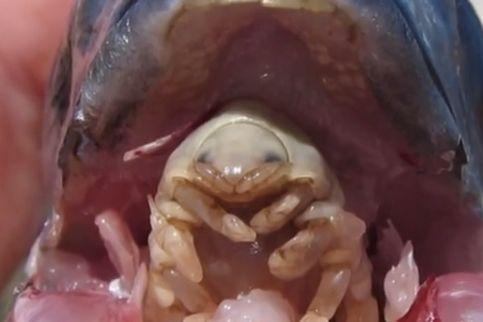It is said that “Variety is the spice of life,” but when it comes to parasites, variety is more creepy than thrilling.
Parasites are beings that live inside other organisms called hosts, disable their immune systems, feed on them, take control of their bodies, organs and tissues and, in some cases, they are lethal.
Here are 5 of the creepiest parasites in the world.
1. Toxoplasma gondii
Toxoplasma gondii is a single-celled parasite that attacks animals and humans. It has been linked to disorders such as schizophrenia, as it affects the brain.
Its life cycle is divided in two phases—the sexual phase, which happens inside cats, where the parasite reproduces—and its asexual one, which takes place in a big animal or in a human.
The parasites are formed in rats and mice and move to cats through ingestion. Humans contract the parasite when they come in contact with infected cats, cat feces, or uncooked infected meat. Pigs, chickens, and other animals can become infected through contact with cat feces, then infecting humans through ingestion.
In humans, the parasite can spread in different places, such as the brain or eyes. When it reaches the brain, it causes high levels of dopamine. Toxoplasma gondii in the brain has been linked to schizophrenia and bipolar disorder.
In mice and rats, high levels of dopamine eliminate the instinctive fear of cats and lead them closer to their enemies helping the parasites to reach their reproduction environment.

2. Cymothoa exigua, also known as ‘tongue-eater’
This aquatic organism grows in fish (see photo above). They don’t infest humans, but they do infest the fish we eat. They prefer snapper.
The parasite sucks the blood from a fish’s tongue until the tongue falls off. It then replaces the tongue with its own body.
The tongue-eater is a hermaphrodite, meaning that, in adulthood, a male can become a female.
Multiple juvenile males enter a fish body through the gills and live in it, until one of them becomes a female. She is the one that attacks the tongue. After the tongue falls off, the parasite stays in the fish mouth feeding on blood and mucus and even mating in there, while the unlucky host will start using the organism as a prosthetic tongue.
3. Paragonimus westermani
Also known as Japanese lung fluke (flat worm), Paragonimus westermani attacks the lungs and lay eggs in their tissues. It can cause a deadly infection. The immune system of the host body will react, producing fluid, which can ultimately collapse the lung and kill the host.
These parasites live in the water and attack shellfish, such as snails and crabs. If a human eats a raw contaminated crab, he or she will contract the parasite. It is estimated that in Japan most crabs contain the fluke.

(Screenshot/YouTube)
4. Cordyceps
There are thousands of different types of Cordyceps, a parasitic fungus, and each of them specialises in a particular species. Caterpillars, ants, tarantulas, and many others are all victims of this parasite.
It takes control of the brain and tissues, replacing the tissues with its own. Cordyceps are so powerful that, before killing their unwilling hosts, the parasites even induce the host to relocate to a suitable environment for Cordycep growth.

(Screenshot/YouTube)
5. Naegleria fowleri
Naegleria fowleri is a single-celled parasite, an amoeba, which hijacks the brain and lives in it, destroying its cells. In the brain, the organism finds food, heat, and moisture—all it needs to survive.
The amoeba is able to cut holes in the host cells of the brain and eat their contents. It can also avoid the immune system of its victim, by forming a coat. The amoeba lives in water, on the bottom of lakes, and multiplies via cell division as the water warms. In these conditions, it can infect humans.
Wearing a nose plug while swimming could save people from contracting this parasite.
In two separate cases of infection by Naegleria fowleri in the United States this year, a 12-year-old named Zachary Reyna died and a 12-year-old named Kali Hardig survived.
RELATED: Zachary Reyna, 12: Rare Brain-Eating Infection, A Look at Survivors
RELATED: Kali Hardig, 12, Recovering From Rare Brain-Eating Infection

(Screenshot/YouTube)




